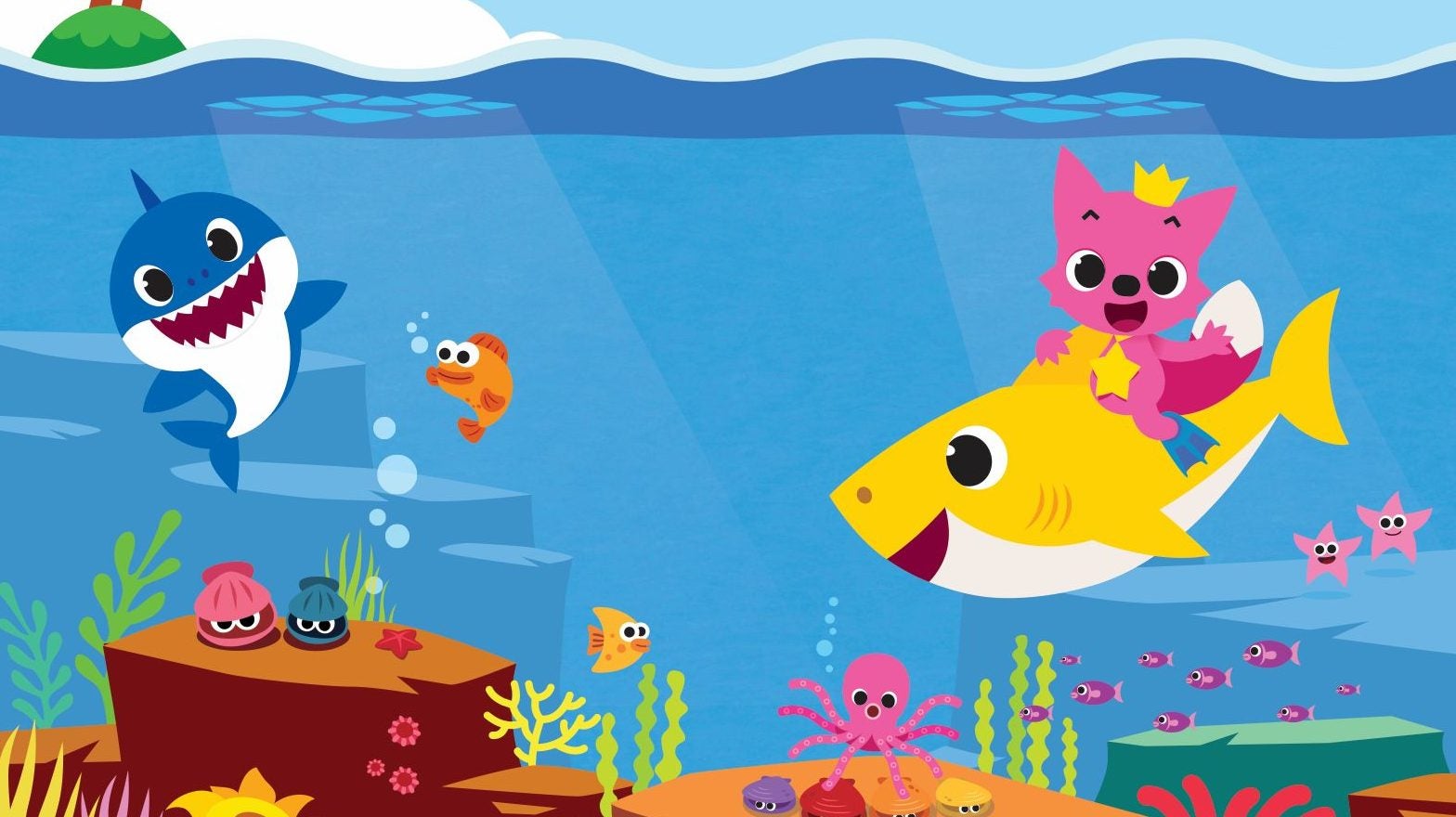“Baby Shark”: A viral earworm for kids that is eating the world
“Baby SHARK, doo doo da-doo da-doo…. Mommy SHARK, doo doo da-doo da-doo…” Do those lyrics ring a bell? If not, you probably don’t have a toddler in your house.


“Baby SHARK, doo doo da-doo da-doo…. Mommy SHARK, doo doo da-doo da-doo…” Do those lyrics ring a bell? If not, you probably don’t have a toddler in your house.
Even though the song is aimed squarely at the under-3 set, it’s fair to say that “Baby Shark,” along with its accompanying crudely animated video, is one of the most popular cultural artifacts of our time. In its various official versions on YouTube and other platforms (including Amazon, iQiyi, and Youk), “Baby Shark” has been watched 3.3 billion times, according to its creators, the Korean children’s video outfit Pinkfong—and that’s not including the hundreds of viral dance tributes hashtagged #BabySharkChallenge.
The most popular version of the song on YouTube, featuring two small Korean children demonstrating the “Baby Shark Dance,” has 1.6 billion views alone.
To put that number in perspective: The currently viral “Bitch, I’m a Cow” music video, featuring the artist Doja Cat slow-twerking in front of a green screen, has a mere 7.5 million views. Drake’s most viewed video ever, “Hotline Bling,” has 1.4 billion views. ”Baby Shark” is up there with the original “Gangnam Style” video, another Korean sensation, which has racked up 3.2 billion views since 2012.
I’m not surprised by the 3.3 billion views of “Baby Shark.” Several hundred of them came from inside my house. I have forgotten what it is to be woken on a Saturday morning in any way other than my 2.5-year-old son bonking me on on the head with a tablet and yelling “BABY SHARK!”
“Baby Shark” is a relatively new phenomenon. My 6-year-old was not raised on the song (though he, like our entire family, is plagued by its uber-earworm lyrics) because it was only uploaded to YouTube in November of 2015. It was one of some 4,000 songs and stories that Pinkfong has produced, in its “‘K-pop’ for the next generation” style, said Jamie Oh, a spokeswoman for its parent company, SmartStudy.
So, why this song? What made “Baby Shark” a global phenomenon? While Pinkfong capitalized on its success by putting out countless sharky iterations (which include “Disco Sharks,” “Baby Shark Halloween,” and “Shark Finger Family”), the company did no particular promotion of this song initially, Oh said. The computer animation is pretty basic, not even as colorful as Pinkfong’s “If Dinosaurs Were Still Alive” series.
Here’s a synopses of “Baby Shark”: A baby shark arrives in a marine habitat of some sort (doo doo da-doo da-doo). Then his mother appears (doo doo da-doo da-doo). His father, grandmother, and grandfather follow (you get the idea). The shark family goes hunting. Small fishes run away. The fishes are safe at last. And that’s the end.
The song appears to be based loosely upon various traditional songs and chants from around the world, including the French children’s song “Bébé Requin.”
“We took a fresh twist and re-created on a traditional singalong chant with our Pinkfong’s Baby Shark,” Pinkfong’s Oh wrote in an email. “In addition to the upbeat rhythms and fresh melody, Dvorak’s New World Symphony has been added to the beginning of the song to emphasize the tension before the shark family shows up.”
(The opening bars of the song recall the theme music from the 1975 film Jaws but as Oh points out, they’re not from John Williams’ score. It’s a common confusion: They’re actually a snatch of the string section from the fourth movement of Czech composer Antonín Leopold Dvořák’s Symphony No. 9. Notably, Dvořák’s composition has passed into public domain.)
Though Pinkfong’s version of “Baby Shark” has been around since late 2015, the #BabySharkChallenge dance hashtag apparently started sometime last summer in Indonesia and the Philippines, and reportedly accelerated when the Instagram star and former Playboy model Amanda Cerny performed the dance on Indonesian TV. Several K-Pop bands got in on the craze, and it spread rapidly across Asia. It took off worldwide among the under-3 set this summer, inspiring trend pieces from Long Island, New York to Hartlepool, UK.
The global ubiquity of “Baby Shark” is quite something. With 680 million children under the age of four in the world right now and 3.3 billion views, it’s a good bet that among those who have access to the internet, a significant portion of all the toddlers on Earth have watched “Baby Shark” in one of the 10 languages Pinkfong has translated it into.
It’s the kind of video that we put our children in front of while making breakfast or taking a quick phone call—innocuous and vaguely educational-seeming. But what are these children gleaning from “Baby Shark”? Why do they love it so much? What does it say about them, or us?
I don’t know the answers, but I do know this: Some day, the “Baby Shark” generation will be babies no more. They will grow up, and rule…the…world. Doo doo da-doo da-doo.